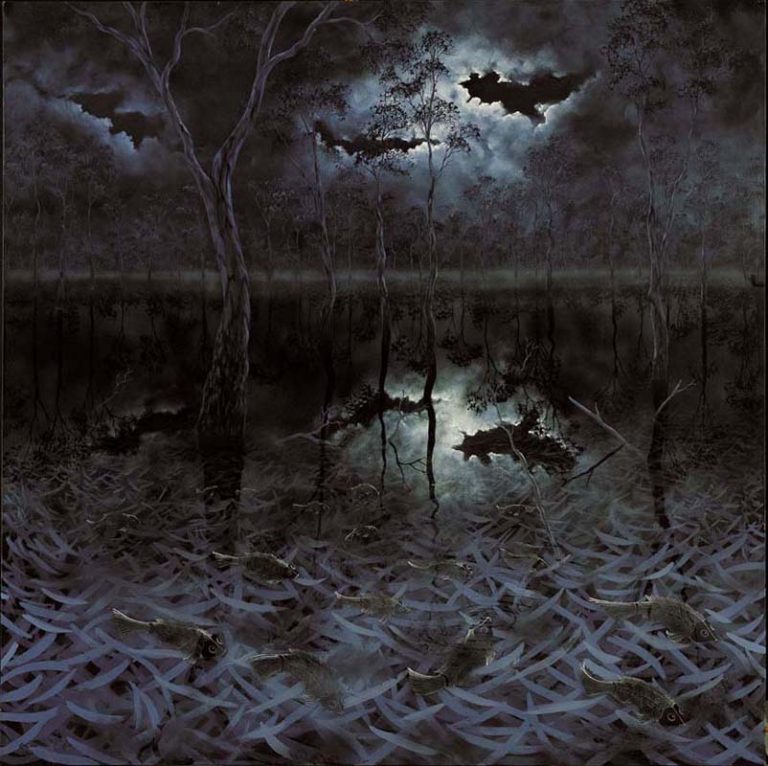We acknowledge the Traditional Owners of the land on which the Queensland Art Gallery | Gallery of Modern Art stands and recognise the creative contribution First Australians make to the art and culture of this country.

Lin Onus / Australia 1948–96 / Morumbeeja Pitoa (Floods and moonlight) 1993 / Oil on canvas / 182.5 x 182.5cm / Purchased 1995. Queensland Art Gallery Foundation / Collection: Queensland Art Gallery | Gallery of Modern Art / © Lin Onus Estate 1994. Licensed by Viscopy, 2016
Lin OnusMorumbeeja Pitoa (Floods and moonlight) 1993
Not Currently on Display
This painting shows the artist’s country, Barmah Forest, in flood by moonlight. Flooded gums and silver-lined moonlit clouds are reflected in the water. Below the surface, fish are decorated in rarrk, a traditional crosshatching design, which Onus learnt in Arnhem Land.
This incorporation of traditional Aboriginal painting styles into western realist landscapes – an Onus trademark – is an insistent reminder that this is Aboriginal land.
Lin Onus was born in Melbourne in 1948. His father Bill Onus was a Yorta Yorta man from the Aboriginal community of Cummeragunja in Victoria, near the town of Echuca, while his mother Mary McLintock Kelly was from a Scottish family in Glasgow.
As a child, Onus visited Cummeragunja with his father, and was told stories by his uncle Aaron Briggs, who gave Onus his Aboriginal name — Burrinja, meaning ‘star’. After leaving school at 13 he worked as a motor mechanic before joining his father’s business, Aboriginal Enterprises, making artefacts for the tourist market.
Appropriation, copyright and equality associated with the manufacture and trade of Aboriginal tourist items were critical issues that would later occupy Onus’s art and life. The discovery of a set of oil paints at his father’s workshop led Onus to painting small landscapes that he sold through the Sherbrooke Art Society Fair in 1974.
In 1975, Onus mounted his first exhibition at the Victorian Aborigines Advancement League in Melbourne. This organisation was symbolically significant for the young artist, foreshadowing the powerful link between his art and the political and cultural milieu that was to become a distinguishing characteristic of his career.
In 1986 Onus was introduced to the Gamerdi community at Maningrida in Arnhem Land and met traditional elders such as Jack Wunuwun (who became his adoptive father and mentor). Onus’s pilgrimages to the community allowed him to acquire knowledge about symbols, patterns, designs and stories, to develop a distinctive visual language.
In 1993 he was awarded the Order of Australia for service to the arts. Despite his premature death at the age of 47, Lin Onus has been widely acknowledged as a pioneer of the Aboriginal art movement in urban Australia.